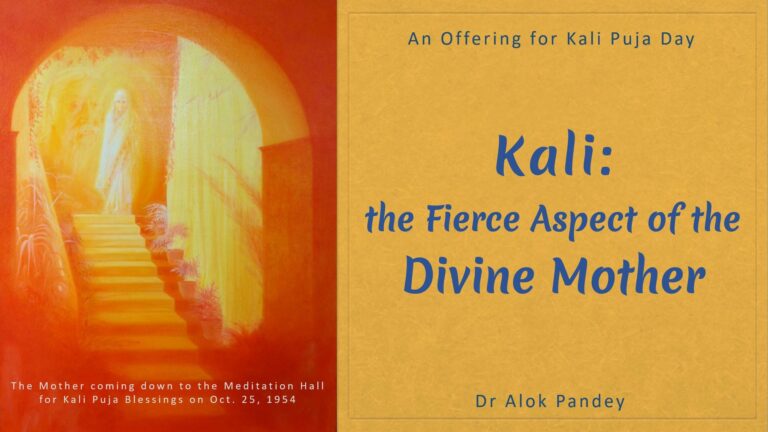Sadhana in its deepest sense is independent of all outer circumstances. It is our ideas of circumstances and attitude towards the daily events of life that make them more or less favourable. The medical profession is no exception. Take for instance the very first brush that a doctor has with the medical profession, in his study of the human body. Looked at in one way the young medico regards the body as a fantastic machine. Overawed by the workings of this wonderful machine, he is easily led to conclude that our finest thoughts, our deepest feelings, our sublimest experiences are nothing more than the body. However seen in another way the same body appears to be permeated with a conscious intelligence. One wonders whether such a marvellous creation can be simply explained by chance evolution and random mutation. One begins to feel that there is more to it than meets the eye. It is like a reaffirmation of faith that existence could not be without a vast and unified conscious intelligence standing behind the works of Nature as its unobserved observer. It is therefore our basic faith, shraddha, that determines our understanding of what we see and experience rather than the object of experience itself!
Moving through the mazes of the human body, we marvel at the intricate perfection of Mahasaraswati’s work. So too in the many circadian rhythms of the human physiology and biochemistry, we begin to see a pattern that reminds us of the great cosmic rhythms. One can see how the universe reproduces itself in the individual at all levels as if all were the workings of a single dance of creation; from the spinning of the nucleus to the movement of molecules through the minute pores of a cell.
So far the learning remains impersonal. But with the beginning of the personal side of medical education, the fresh medico has to confront many existential dilemmas. His rendezvous with death, the great annihilator, becomes frequent enough to raise uncomfortable questions about life itself. He also meets life wearing the mask of death or hiding its sting behind glamorous appearances. Or else he begins to learn that the only thing predictable about life is its unpredictability. The neat and perfect world of cellular physiology is challenged and ruptured by the sight of human pathology. The rub of human pain awakens compassion more readily but can also desensitize one to it. Some doctors instinctively begin to carry this pain in their own consciousness through sympathy and empathy. Others begin to regard pain as a routine transaction between life and death as if pain were an inevitable price that life must pay for its will to live. The philosophical side of the doctor has to reconcile with the existence of pain in God’s world, while the practical side has to discover the many possible solutions to it, — only to discover the impermanence of all such solutions. Thus we see that medical training itself can serve as a useful preparation for spiritual life.
The human body is a meeting-point for all the forces manifested so far. A study of human beings therefore can be an interesting gateway to the understanding of the cosmic forces. True, modern medical science, basing itself largely upon material and sensory evidence, often ignores the role of many insensible and supraphysical forces in health and illness. Still most doctors, unless they are totally blinded by reductionism, do begin to acknowledge the role of deeper forces in healing. This recognition may come early or late, it may come when confronted with the anomalous or the unpredictable but it does come to most. Even as a discipline, general medicine is beginning to recognize the role of thoughts, beliefs, attitudes and emotional states in the causation and cure of diseases. What else is this but a backdoor entry into domains higher than the mere physical? In addition, the need for compassion, patience, perseverance in the face of inevitable failure; faith, goodwill, generosity, kindness, courage in the face of death; can be born naturally in a doctor, since they are so much more needed in this profession than many others. What else is this but a preparation for a higher and deeper life? For only the touch of the inmost soul can create in us faith, courage, charity, compassion and the will to help the struggling race:
Through this she sends us her glory and her powers,
Pushes to wisdom’s heights, through misery’s gulfs;
She gives us strength to do our daily task
And sympathy that partakes of others’ grief
And the little strength we have to help our race,
We who must fill the role of the universe
Acting itself out in a slight human shape
And on our shoulders carry the struggling world.
[Savitri: 527]
Of course, any profession can become a means for entry into a deeper and a higher life if we pursue it with the right inner attitude. Done in a spirit of offering and selflessness, asniskama karma, it can prepare us for a powerful Yoga in the world if not actually become a means of Yoga itself. But the fact that the medical profession needs a combination of the heart, head and dynamic will makes it specially useful as a means of preparation for an integral Yoga. The physician needs to deliberately reconcile in himself reason and faith, practical sense and idealism, the attitude of a fighter and the approach of calm wisdom, in a harmonious synthesis for useful action. Above all, he is called upon to become not just an instrument of light, strength, peace and love but most importantly, an instrument of Grace. On the other hand, he is also called upon to supply the deficiency of faith in illness-bound people. For in the final analysis it is not the physician or his drugs but the action of Grace supported by the patient’s faith that can victoriously conquer disease, suffering and death.
Alok Pandey



